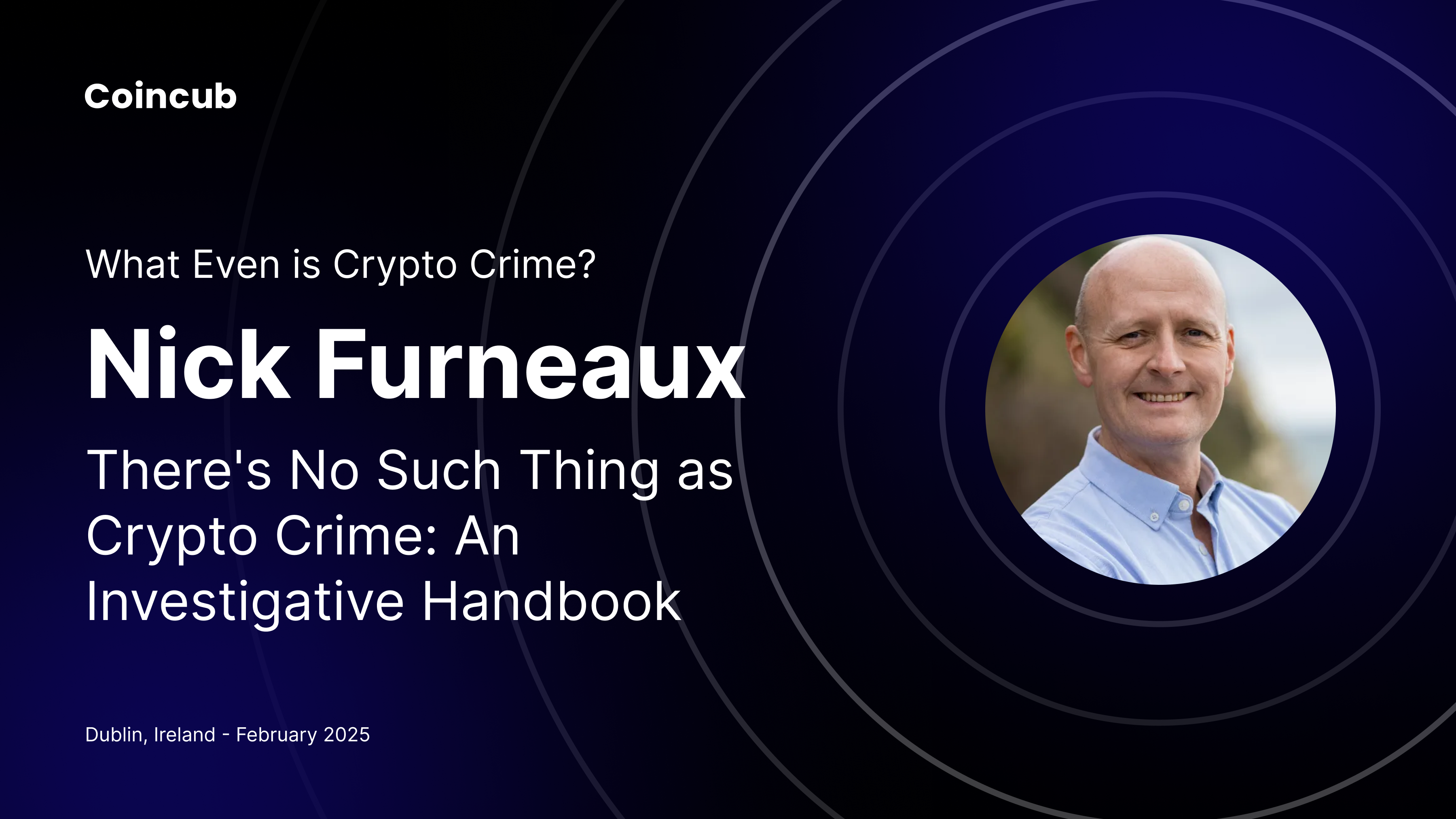Nick Furneaux and His Book: What Even is Crypto Crime?

Is cryptocurrency a tool for crime, or is it simply misunderstood? Nick Furneaux, a well-known digital forensics expert, argues that “there’s no such thing as crypto crime.” His latest book, There’s No Such Thing as Crypto Crime: An Investigative Handbook, challenges common misconceptions about cryptocurrency and its role in criminal activity. Instead of blaming crypto itself, Furneaux highlights that criminals use cryptocurrencies as a tool just as they’ve used traditional financial systems for centuries.
Furneaux is a respected figure in digital forensics, having spent years training law enforcement agencies, including police forces in the UK and USA. He trained these agencies on tracking illicit transactions on the blockchain – a skill set that will be even more necessary. His expertise spans memory forensics, cyber investigations, and cryptocurrency tracing. Through his work, he has helped investigators uncover hidden assets, follow the flow of stolen funds, and recover money for victims of fraud.
His book is a comprehensive guide for investigators, regulators, compliance leaders, and anyone interested in forensic crypto analysis. It dives into real-world cases, practical techniques, and modern challenges in the field. He also emphasizes the need for better discovery tools, as many law enforcement agencies still struggle to detect cryptocurrency involvement in crimes.
Beyond technical expertise, Furneaux sheds light on the human side of financial crime, including romance scams and large-scale scam farms. He believes that while crypto will continue to evolve, the fundamental nature of crime remains the same – bad actors will always find ways to exploit new technologies. Should we repeat that once again for Bitcoin haters, or you guys got the point? As a wise man once said, don’t hate the player; hate the game.
But Who is Nick Furneaux?
Furneaux’s journey into digital forensics began in the early days of personal computing. He was fascinated by how computers store and process information, eventually leading him to develop forensic software.
One of the key turning points in his career came in 2015 when a UK police investigator asked him how to extract Bitcoin from a suspect’s computer. This question made Furneaux realize that law enforcement had a knowledge gap in understanding cryptocurrency investigations. From that moment on, he dedicated much of his work to educating investigators on how to trace funds, identify crypto wallets, and track money laundering schemes involving crypto.
His expertise extends beyond cryptocurrency. Furneaux has developed forensic tools, contributed to software used in cyber investigations, and spoken at major security conferences. He has collaborated with companies like Chainalysis and TRM Labs, helping refine tools that aid financial crime investigations.
Despite his deep technical knowledge, Furneaux is known for his practical, hands-on investigation approach. He believes in making forensic techniques accessible to a broad audience, a philosophy reflected in his books and training sessions. Sounds like a crypto-savvy guy, to be honest.
There’s No Such Thing as Crypto Crime – Or Is It?
In his recent book, Nick Furneaux challenges the idea that cryptocurrency is a criminal tool. Instead, he explains that crypto is another financial instrument, just like cash or bank transfers. Criminals use it for illegal activities, which doesn’t make crypto inherently bad.
One of the book’s central themes is how investigators can track and trace cryptocurrency transactions. Many law enforcement agencies struggle to detect crypto-related crimes because they lack the right tools and knowledge. Furneaux explains how to find hidden crypto on computers and phones, follow blockchain transactions, and connect them to real-world individuals.
The book also emphasizes the need for better forensic tools. According to Furneaux, the forensic software available today is either too expensive or lacks proper discovery features. He argues that more affordable and accessible tools are necessary to help investigators uncover crypto transactions and recover stolen funds.
This book takes us one step closer to informing and educating the masses on the nature of cryptocurrencies. Now, let’s break it down using an analogy. Instead of crypto, let’s talk about cars. Cars are a normal part of everyday life. People use them to work, transport goods, and visit friends. However, criminals use cars as getaway vehicles in robberies. Now, just because a few criminals use cars for illegal activities, should we blame the car or the criminal? Or even worse, the guy who invented cars? The same stands for cryptocurrencies.
And what do authorities do when a car is used as a getaway vehicle in robberies? They focus on tracking stolen vehicles, identifying license plates, and improving road safety. This should be the approach for crypto crime as well.
Why It Matters
Cryptocurrency is no longer a niche topic—it’s part of everyday financial transactions, investments, and criminal activity. The daily volume of the crypto market averages hundreds of billions of dollars, and governments are still behind. Crypto is a disruptive technology that took authorities a while to understand how big this industry would become. Money is flowing in, regulators are still taking their “baby steps,” but criminals are more prepared than ever. This is why forensic expertise in cryptocurrency is crucial.
Nick Furneaux emphasizes that the real challenge isn’t crypto but the lack of proper investigative tools and awareness. Many crimes today – from drug deals to cyberattacks – involve crypto, yet some investigators still struggle to recognize when crypto is involved. Furneaux argues that if authorities fail to adapt, criminals will continue to exploit these blind spots.
To find the solution to a problem, you must first understand the root of the problem. So, solving crypto crime means understanding crypto first. Understanding how crypto is used legally and illegally is no longer optional in a world where crypto transactions are the norm.
Final Thoughts on Nick’s Take on Crypto Crime
Nick Furneaux’s argument is straightforward: Crypto has never been the villain – criminals have been and continue to be. Just as criminals have exploited cash, banks, and online transactions for centuries, they now use cryptocurrency to move funds. Blaming the technology is missing the point.
His book debunks myths and provides practical solutions for tracking illicit crypto activity, helping law enforcement and analysts stay ahead. In short, instead of fearing or banning crypto, we need better investigative tools and education.
Crime evolves, but so should our ability to fight it. Nick will attend the Digital Asset Summit in El Salvador on 29 April. Register if you want to have first-hand information from the crypto Sherlock himself.




